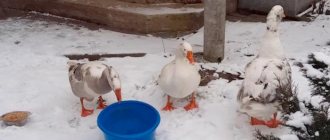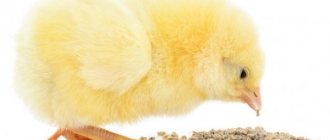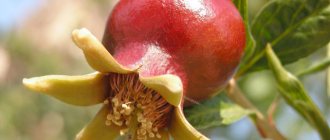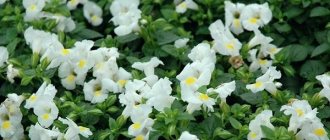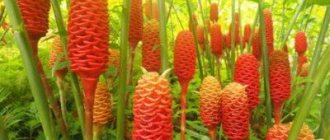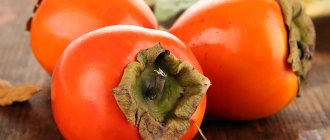106
no comments yet
0
Author of the article
Emelianenko Gennady
Reading time: 8 minutes
Breeding geese is a profitable business. These poultry are a complete source of nutritious meat, delicious liver, large eggs, down, feathers and fat. Before breeding, you need to decide which breeds are most beneficial for keeping.
Suitable breeds
When choosing, you need to consider the following factors:
- productivity and quality of meat;
- egg production;
- quality characteristics of down and feathers;
- unpretentiousness to living conditions;
- disease resistance.
Geese breeds are divided into the following groups:
- Large with impressive body weight. They are most suitable for breeding for meat production.
- Average. They have increased egg production rates, are easy to keep, and have good meat productivity.
- Small with little weight. Such breeds are not very popular and are used exclusively for decorative purposes.
Beginning farmers are advised to pay attention to the first group: geese grow quickly, possible errors in maintenance are immediately taken into account. The following bird species are considered the most popular in the group:
- Large gray, weight up to 7 kg.
- Chinese, weight up to 5 kg.
- Linda, weight up to 8 kg.
- Kuban, weight 5.5 kg.
- Kholmogorskaya, weight up to 10 kg.
- Toulouse, weight 10 kg or more.
Kuban goose. A breed that pleases with good egg production and excellent taste of eggs and meat
Read
Linda. Early maturing goose with outstanding meat characteristics
More details
Kholmogory goose. One of the most profitable breeds with excellent quality of meat, eggs and down
Look
Toulouse breed of geese. French meat giants with a phlegmatic character
Further
Chinese geese. For what purpose is it better to keep this ancient breed?
Read
Ural white. Hardy, unpretentious breed of geese
More details
The Rhine goose is a harmoniously built bird with good meat productivity
Look
The Italian goose is a relatively new breed with good productivity indicators
Further
Temperature and illumination of the goose barn
The goose is a cold-resistant bird. It can exist in a goose barn without any problems even at minus 10 degrees. She is not afraid of short-term drops to minus 25 degrees. But if geese are kept for breeding, such conditions will adversely affect the egg production of geese. Therefore, it is desirable that the goose house be warm. To do this, the walls are carefully insulated.
Plus temperatures and artificial lighting in the goose barn will speed up the start of geese laying eggs. They lay eggs with a day length of 14 hours. This means we need to lengthen the day artificially. To do this, we leave the lights on from 6 am to 8 pm. And we do this until the natural daylight hours become equal to 14 hours.
Geese usually start laying eggs at the very end of winter. But with such lighting, egg production can occur much earlier (closer to the end of January).
Information for beginner poultry farmers
As a rule, geese are unpretentious, and raising them does not require large investments. An equipped goose coop is required for birds, but it is not always necessary to create a special microclimate in it - only if you want to produce offspring.
Geese have strong immunity and rarely get sick. Feeding them will not be expensive either. Compound feed is needed only at the initial stage. Grown-up birds feed on grain feed and grass, including weeds.
However, for proper development and rapid weight gain, a pasture is required where the birds could graze all day, effectively processing pasture, as well as a body of water - natural or artificial. This can create certain difficulties during breeding.
Geese are a suitable poultry even for novice poultry keepers. With intensive fattening, they quickly gain weight within the first three months, and after six months the weight of meat breeds reaches the possible maximum indicators - 5-6 kg. At this time, the birds are already ready for slaughter; it is not advisable to keep them longer, since subsequently their meat will become tougher, lose juiciness, and the carcass will take on an unattractive appearance due to the “stumps” of the feathers.
What do geese get sick with?
If you keep geese improperly and do not follow the rules of hygiene when breeding at home, you will get such a frequent and unpleasant problem as infections. They can destroy the entire herd and make the meat unfit for consumption.
Types of infections and predators:
- Viral enteritis.
- Cholera.
- Paratyphoid.
- Aspergillosis.
- Calibacillosis.
In order to avoid diseases, you need to promptly treat the walls of the poultry house with lime, monitor and remove infected individuals from the flock, prevent contact with other flocks and promptly treat your birds.
Another danger of quickly losing young individuals is predators. If the bird is not strong enough and the predator is large, then during the night only one animal can destroy up to a hundred goslings. The main pests include:
- Ferret.
- Weasel.
- Marten.
- Rat, etc.
To combat them, special traps are installed.
Requirements for conditions of detention
Ordinary boards, previously used bricks, and adobe are suitable materials for building a goose barn. It is advisable to insulate the walls to protect the livestock from strong winds, cold and drafts.
The area of the premises is calculated based on the number of livestock. Approximately 1 square meter is required for 1 bird.
Temperature
Meat breeds easily tolerate frosts down to -10 °C, as well as short-term drops to -25 °C. However, if birds are bred to produce offspring, then such conditions are unacceptable for them. Therefore, it is advisable to maintain the temperature in the poultry house at a level not lower than +15 °C.
Light mode
It is advisable to build a goose barn with a façade to the south so that more sunlight gets through the windows, and in the southern regions - to the southwest or southeast.
Geese lay eggs when the daylight hours are 14 hours, so additional electric lighting will be required in the fall and winter when daylight hours are short.
Humidity Requirements
Excessive humidity in the goose barn negatively affects the health and immunity of birds. The poultry house should be as dry as possible; for this purpose, it is advisable to make the flooring from boards or adobe. At the same time, it must be raised above the ground level by 20 cm so that groundwater does not enter the room. The roof is also covered with roofing felt and sloped so that precipitation does not get inside the room.
Litter
The litter serves as an excellent floor insulator, dries out droppings and makes the air in the room cleaner. It is advisable to use hay, sawdust, shavings, sphagnum peat, sunflower husks, chopped corn cobs.
One bird requires about 40 kg of bulk material per year.
In winter, experienced poultry farmers cover the floor with slaked lime, and lay a warm bedding of hay or straw on top, on which mineral fertilizers (superphosphate) are poured. As a result, by spring they have an excellent fertilizer for the garden.
What diseases are geese susceptible to? Symptoms and methods of treatment of infectious, non-contagious and parasitic diseases
Read
The best varieties of white geese. Features, egg production, weight indicators
More details
The best breeds of geese for home breeding. TOP meat, egg and ornamental birds
Look
TOP 5 breeds of geese with a large build. Features, productivity indicators
Further
Contents of goslings
Breeding geese is a fairly simple matter; the main thing is to create comfortable conditions for their life. Before buying, you should think about where they will live, and, accordingly, about building a poultry house - it should be a clean and dry room.
Day old goslings
The walls in the barn must be pre-treated with lime to prevent the possibility of infections, fungi, and mold. If you plan to keep birds all year round, then you will need to build a high-quality poultry house.
To spend time in the barn, geese need clean, dry bedding, which can be straw, peat, or sawdust. It is necessary to install drinking bowls indoors, since access to water should be unrestricted. It is better to place them above pallets - this way you can reduce the level of humidity and regularly empty the containers.
It is recommended to keep geese near water bodies
A small number of goslings can be kept together. For every ten it is necessary to allocate one square meter. However, if there are a lot of birds, then it is better to separate them by placing them in different enclosures - this is necessary to preserve the livestock, since the babies can crush or injure each other.
If you keep geese only in the summer, then you don’t have to think about a large poultry house - you can keep the chicks in a greenhouse, summer kitchen or veranda. The main thing is that it is a closed room from which they cannot get out on their own, which will protect the kids from other birds and animals, as well as rain and winds.
Italian goose walks babies
Drinkers, feeders
It is permissible to build a feeder with your own hands. Boards, old pipes and other available materials are suitable for production.
The following requirements apply to feeders:
- they must be safe for birds;
- suitable for the type of food (wooden - for dry formulas, metal - for wet formulas, plastic - for milk formulas).
The main condition is that for comfortable feeding, the size of one feeder should not be less than 15 cm. The optimal placement height is 25 cm above floor level.
Drinkers are divided into the following types:
- Nipple. Equipped with a drop eliminator, it provides a dosed supply of liquid. The downside is that the nipples get clogged quickly.
- Bell-shaped. It has a built-in valve and allows you to control the amount of water; it requires connection to a central water supply.
- Vacuum. It is easy to make, but the water in it heats up quickly.
It is necessary to monitor the quality of water in the drinking bowl. It should always be fresh and not freeze in winter.
How to keep and care for geese?
It is necessary to keep geese at home in special premises - goose houses or pens.
It is important that the birds are not crowded, otherwise they will start to get sick. Domestic geese cannot be raised in cage conditions, as they need to be active.
Caring for birds should consist of daily walking in the fresh air. After 40 days of age, they are walked near water bodies. Independent walks are possible after gaining 2 kg of live weight.
Raising geese for meat will be more effective if you walk them early in the morning, as they will be able to feast on lush grass.
Domestic birds are excellent at navigating the terrain, so they quickly find their way home.
Newborn birds are placed in a separate room with a constant temperature and additional lighting.
It is important that they are not cramped and cold, otherwise they will begin to huddle together, which can lead to their death.
Individuals are kept on straw bedding, making sure it is always dry and clean. Change it every 2 weeks. Damp and dirty litter can lead to various diseases.
There should be no drafts, moisture or stuffiness in the poultry house.
in autumn
Features of care in the fall are that pebbles and sand are added to the litter so that the paws are cleaned faster. While it’s warm, birds spend a lot of time outside, so they are provided with a special shelter from the heat and rain. Before the cold weather sets in, bathing containers are placed in the yard.
in winter
Geese can withstand minus temperatures well, but they do not tolerate severe frost well for a long time, so the temperature in the goose barn should not fall below + 5°C. There is no need to additionally heat the room, but you need to protect it as much as possible from drafts.
In cold weather, peat is added to the litter to retain more heat under the paws.
They also hang dried grass for feeding. Food and water are given after a little warming.
Walking conditions
Geese require regular walking.
Flood meadows, stubble, areas where clover, legumes, sorrel, nettles, dandelions, and cereals grow are suitable for grazing. The main thing is that the walking area is as spacious as possible, so that the birds have the opportunity to move more and process pasture.
Water
For breeding geese, the presence of a reservoir is not a prerequisite. Of course, a good, clean reservoir with rich vegetation will be a definite plus, but rapid weight gain, the number of eggs, and health depend, first of all, on the conditions of detention. If you provide the birds with good nutrition and proper care, the birds will easily survive the lack of a reservoir.
When arranging a bathhouse for geese in the yard, the following conditions must be observed:
- Possibility of water renewal. Non-renewable water blooms and is quickly polluted by birds.
- Arrangement of a gentle slope. It will be easier for adult birds to descend into the water, and for young birds to climb back onto land.
Large basins and troughs are suitable for bathing areas.
Geese food
When feeding, it is important to properly combine roughage with succulent green food. An adult can eat up to 2 kg of greens per day. In order to provide such an amount, it is necessary to fence off a large walking area in advance; if the area is insufficient, it is important to use fertilizing with freshly cut grass or other plants. If you violate the proportions in the diet and feed more grains, the birds will begin to rapidly gain fat and will be unsuitable for sale. For feeding roughage, ordinary grains (barley, corn, etc.) produced in the fields are suitable. For the meat industry, geese are raised for up to 4 months, after which the quality of the meat decreases.
Natural hatching of chicks
If geese are kept in a poultry house for the purpose of further breeding, it is necessary to arrange nests in the optimal quantity.
Nests can be made from plywood or wicker baskets with bedding changed frequently. Those geese, as a rule, have one nest, located in an insulated place away from direct sunlight, preferably in a separate room from the rest of the birds. Optimal dimensions of the nest:
- height - about half a meter;
- length – 65 cm;
- width – 40-50 cm;
- threshold height – no more than 10 cm.
The average incubation period for eggs is about a month. Usually the chick hatches on the 28th day.
The most common egg breeds of geese
Read
Decorative geese. The two most beautiful breeds
More details
Hatching chicks under a goose
Nest and microclimate
Raising geese under a broody hen has many more advantages than artificial incubation. There is one minus - due to the fact that goose eggs are large, we hatch up to 14 chicks under one hen.
Now let's talk about how to breed goslings in natural conditions, and what are the features of keeping geese while hatching offspring.
Build special nests in the barn for incubation. How to build them, dimensions and other information are described in the article “How to make a nest for geese with your own hands.”
In the brooding room it is important to maintain a temperature of 16-18 degrees and a humidity of about 65%. The air should be fresh, but not damp. Make sure there are no drafts. Plug the cracks and insulate the floor.
Constant control
Don't let the ganders near the geese. If there are several females, separate each nest from each other with a partition. Such measures are necessary so that the geese do not conflict and do not lay eggs in nests where they are already hatching another clutch. Otherwise, the incubation time will increase, and the goslings will be born weak.
The incubation period is described in the article “How long does a goose sit on eggs.”
Carefully ensure that the goose, after grazing, eating or drinking water, takes exactly its place and does not roll other people's eggs into its nest.
Remove accidentally broken eggs. They can rot and ruin the smell in the house, as well as stain other eggs. This may force the goose to abandon the clutch.
We looked at how to keep geese while hatching eggs. There is another option to start a business - to purchase grown young animals.
Incubation of eggs at home
It is quite difficult to hatch chicks in an incubator due to the large size of the eggs. It is optimal if about 70% of them survive.
Expert opinion
Novoselova Sofya Ivanovna
Farmer. 20 years of experience.
Ask a Question
Eggs that are laid no more than 10 days ago are suitable for hatching. It is important that their shape is perfect. The incubation material cannot be washed, but can be disinfected in a weak solution of potassium permanganate.
Incubation period is 28-33 days depending on the breed. Hatching can begin on the 27th day of placing incubation material in the incubator.
Incubation mode
| Index | 1-8 days | 9-13 days | 14-27 days | 28-33 days |
| Temperature (degrees, °C) | 37,8 | 37,8 | 37,5 | 37,3 |
| Relative Humidity (%) | 60-70 | 55-60 | 55-60 | 80-90 |
| Auto-rotate (6-8 times a day) | + | + | + | Off |
| Spraying | – | – | 2 times a day | – |
| Opening vents, cooling (duration 10 minutes) | – | – | 2 times a day | – |
How to feed geese to get tasty meat
Several types of food are used to feed geese:
- Dry. The grain mixture most often includes millet, corn, and wheat. It is rarely used because birds do not gain weight well on it.
- Wet. The daily portion for one bird is prepared from 1 kg of grain mixture, 1.5 liters of boiling water, 5 g of feed yeast, herbs and chopped root vegetables.
- Combined. This is done based on the first two options.
The last two are most often used. You can add food waste to them.
At different times of the year, the diet will be different. In summer, birds can be fed on pasture on their own; in this case, it is enough to feed them in the evening with wet mash. In winter, birds are fed wet food twice and dry food once.
How to give corn to birds. Determining the difference between feed and sugar grades
Read
Germination and steaming of barley and wheat for birds
More details
Making mash at home: basic recipe
Look
Cultivated greens for birds: what you should specially grow in your garden
Further
Approximate diet
The standard daily ration for one goose should contain the following components:
- grass and greens – 2 kg;
- root vegetables – 1 kg;
- grain crops – 300 g;
- powder chalk – 10 g;
- mineral feed – 25 g.
Sources of vitamins in winter
With the arrival of cold weather, food must be enriched with vitamins and proteins. Steamed dried clover, rowan, hay, linden and birch brooms, fish oil, sprouted grain, pine needles and silage are used as a source of nutrients. Herbal granules are excellent; with proper skill, you can learn to make them yourself and prepare them for future use.
Rich in protein are fish, bone meal, and sprouted oats. They can also be added to food.
How to properly feed birds oats and is it possible to do it at all?
Read
How to give fish oil to birds. What is the benefit of the drug
More details
Meat and bone meal is a must-have additive for poultry
Look
At what age do fattening begin?
Fattening of geese begins at the age of one month, when their body is sufficiently strong. Before slaughter, adult birds begin to be fed more intensively, increasing the number of servings from the standard two or three to six times a day.
Diseases and prevention
The following diseases occur in geese:
- Rickets. Develops with a lack of vitamin D. Characterized by lethargy, slow development, softening of the bones and beak. For prevention, yeast, fish oil and fortified products are introduced into the feed, and the geese are taken out into the sun for the whole day.
- Paratyphoid. Leads to the death of 95% of young animals, manifests itself in lethargy, drowsiness, loose stools and rotting of the eyelids. Associated with poor quality care and maintenance of birds. Treatable only with antibiotics.
- Yolk peritonitis. Only females get sick. The disease is provoked by timidity, poor handling of poultry and food containing a large amount of protein. It is recommended to regularly clean the premises, carry out disinfection and improve the quality of food.
- Aspergillosis. An infection in the form of a fungus that penetrates the bird's respiratory system. Characterized by weakness, lethargy, constant thirst and loss of appetite. The disease has no cure. For preventive purposes, the room is ventilated and cleaned.
- Echinostomatidosis. Ingestion of echinostomatodes and trematodes into the bird's body by eating frogs and tadpoles infected with parasites. Manifests itself in weakness, diarrhea and loss of appetite. Bithionol and Phenosal help.
- Poisoning. They occur when poisons, low-quality feed and household chemicals are ingested. Symptoms include vomiting, diarrhea, and cramps. With a rapidly developing infection, the goose may die. To alleviate the condition, vegetable oil or water is administered.
- Cholera. Appears as a result of infection of goslings with pasteurella from rodents and wild birds. It is difficult to save young animals. Characterized by weakness, convulsions, wheezing, and fever. Antibiotics and drugs based on sulfonamides are used for treatment.
Caring for chicks
Caring for chicks is fundamentally different from caring for adult birds.
Features of feeding in the first days of life
Small goslings are fed at least 6 times a day with ground or highly crushed food rich in minerals, vitamins, and proteins. The basis of the diet in the first two days of life is a boiled egg, which can be diluted a little with milk, as well as a small amount of cottage cheese.
On the third day of life, babies are offered a wet mixture of crushed grains based on broth or water.
From 7 days you can add root vegetables to your food, and from 22 days you can add food waste. Chalk, bone meal, and crushed eggshells are used for feeding.
Is it possible to give birds cottage cheese and other fermented milk products? Is this supplement useful?
Read
Is it possible to give birds milk, kefir and yogurt. Which product is healthier?
More details
Rules for feeding poultry with wheat
Look
Is it possible to include carrots and their tops in the diet of birds?
Further
How and in what quantity can you give birds sugar and fodder beets?
Read
Inclusion of zucchini in the diet of birds. In what form should the vegetable be given?
More details
Pumpkin in the diet of poultry: features and benefits
Look
In what form and at what age can birds be given potatoes?
Further
Domestic goose: why is it profitable to breed?
Before purchasing and breeding, it would be a good idea to have a good understanding of goose products. First, let's define the basic materials that can be obtained from these birds. These include:
- Meat.
- Eggs.
- Fat.
- Liver.
- Down and feathers
Based on this, it will be possible to begin choosing a breed for purchasing goslings or raising them in an incubator.
Meat
Some breeds of this domestic dog can reach 12 kg. Considering the relatively low cost of feed, this weight is quite economically beneficial. Goose meat contains a large number of useful microelements, and is also valuable for other properties, such as:
- high calorie content;
- choleretic effect;
- increases the amount of hemoglobin;
- strengthens the immune system;
- contains a number of important amino acids.
The nutritional value of 100 grams of goose is 400 kcal and contains 7.1 grams. fat, 25.7 gr. squirrel. It is important to note that meat contains virtually no carbohydrates. Eating such a product has a choleretic effect and increases the level of hemoglobin in the blood, which is useful for patients with anemic conditions. The meat of this bird significantly strengthens the immune system and replenishes the body’s reserves with a large group of amino acids necessary for its normal functioning.
Eggs
Geese do not have a very high egg production compared to other birds. They are capable of producing from 80 to 120 eggs per year. However, goose eggs contain a number of useful substances necessary for the normal functioning of human organs:
- vitamins A, B, C, D, K;
- minerals: calcium, potassium, iron, phosphorus, copper.
- the presence of a strong antioxidant lutein.
The presence of a strong natural antioxidant, lutein, in the yolk deserves special attention. It has a beneficial effect on the health of people with cerebral blood flow disorders, pregnant women and children.
Fat
Goose fat is a unique product, which allows it to be widely used in the pharmaceutical industry. This is facilitated by its special composition, which is replete with many essential acids:
- oleic acid - 59.7%;
- palmitinoleic acid - 22.4%;
- linoleic acid - 7.6%;
- stearic acid - 6.2%;
- myristic acid - 0.4%;
- linolenic acid - 0.4%.
The unique composition allows the fat to be used to treat inflammatory diseases, skin diseases, burns, frostbite, and immunodeficiency conditions.
Liver
Another important element in raising these birds. The fact is that goose liver, obtained in a certain way, is a valuable delicacy. Only obtaining a product such as foie gras can pay for the raising of this type of bird. However, to produce it you need to resort to force-feeding and special housing of the goose or goose.
